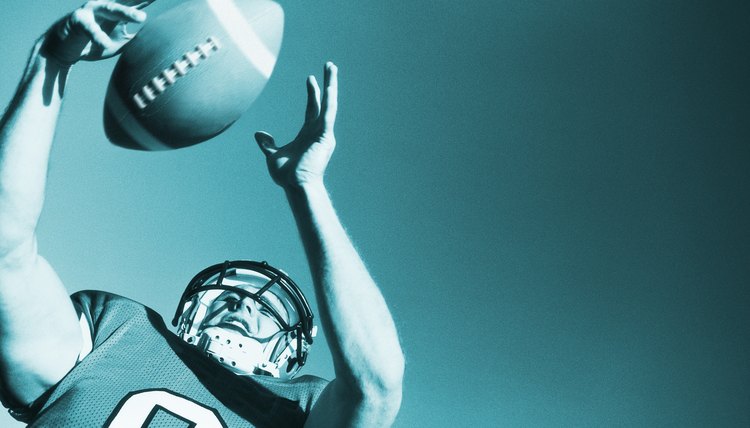NCAA & NFL Football Timeout Rules

According to multiple studies, timeouts are more valuable than good field position late in a football game. Timeouts are also effective at "icing" the kicker and the proper use of timeouts on offense forces the defense to change strategy. Simply put, effective time management on the gridiron leads to wins. Deepen your appreciation for the game by understanding the difference between pro and college timeout rules.
Reload Every Half
Both NCAA and NFL football grant three timeouts per half of play. These timeouts do not role over to the next half, so you are likely to see timeouts called more casually during the first half. Any active player on the field or the head coach can call a timeout. In NCAA football, a substituting player coming into the game can also call a timeout if he is within the hash marks in the middle of the field. All other players and coaches are ineligible to call time.
Timeout Length
Each timeout in NCAA football is 90 seconds long while NFL timeouts can vary in length. If television coverage goes to a commercial break, then the timeout lasts two minutes. But if coverage stays on the field, the timeout lasts only 30 seconds. NCAA allows the team that called the timeout to cut the break short, returning to the field before the 90 seconds are up. But, for this to happen, the opposing team also has to be on the field and express readiness to the ref.
Injury Timeouts
The game clock stops for injured players on the field. The player must be removed and sit out for at least one down. To deter fake injuries, the NCAA enforces a 10-second runoff of game clock if the injury takes place with under a minute to go in either half. Calling a full timeout prevents the runoff. The NFL charges a full timeout if the injury takes place after the two-minute warning of either half, unless a penalty caused the injury. If the team is out of timeouts, a 10-second runoff of game clock occurs, with an extra 5-yard penalty and 10-second runoff for subsequent injuries.
Unsportsmanlike Conduct
In both the NCAA and NFL, each team may call a timeout during the same break in play, but neither can call two consecutive timeouts before another down is played. In fact, the NFL considers calling two consecutive timeouts for the purpose of icing a kicker unsportsmanlike conduct, resulting in a 15-yard penalty.
Overtime Timeouts
NCAA overtime gives each team one possession at the opposing 25-yard line. Each possession is considered a period and both teams are given one timeout to use during each period. Periods are played until the tie is broken. Regular-season NFL games feature a 15-minute overtime period. Each team is granted two timeouts per overtime period. But postseason NFL games play overtime indefinitely, until the tie breaks. Both teams receive three timeouts per 30 minutes of overtime play.
NFL Instant Replay Challenge
An NFL coach can throw a red flag in between downs to challenge certain rulings on the field. The refs then watch the call in question on instant replay, upholding or overruling the call. A coach can challenge twice per game, but must wager one timeout. An incorrect challenge results in the loss of that timeout. Get two challenges correct and receive a third challenge. All challenges are automatic with under two minutes left in either half or overtime period.
References
Writer Bio
Christopher Michael began writing in 2010 for Break.com. He received a Bachelor of Arts in English from the University of Massachusetts, Amherst. Writing sports and travel articles helps support his professional baseball career, which has taken him to 49 states, five continents and four oceans.
